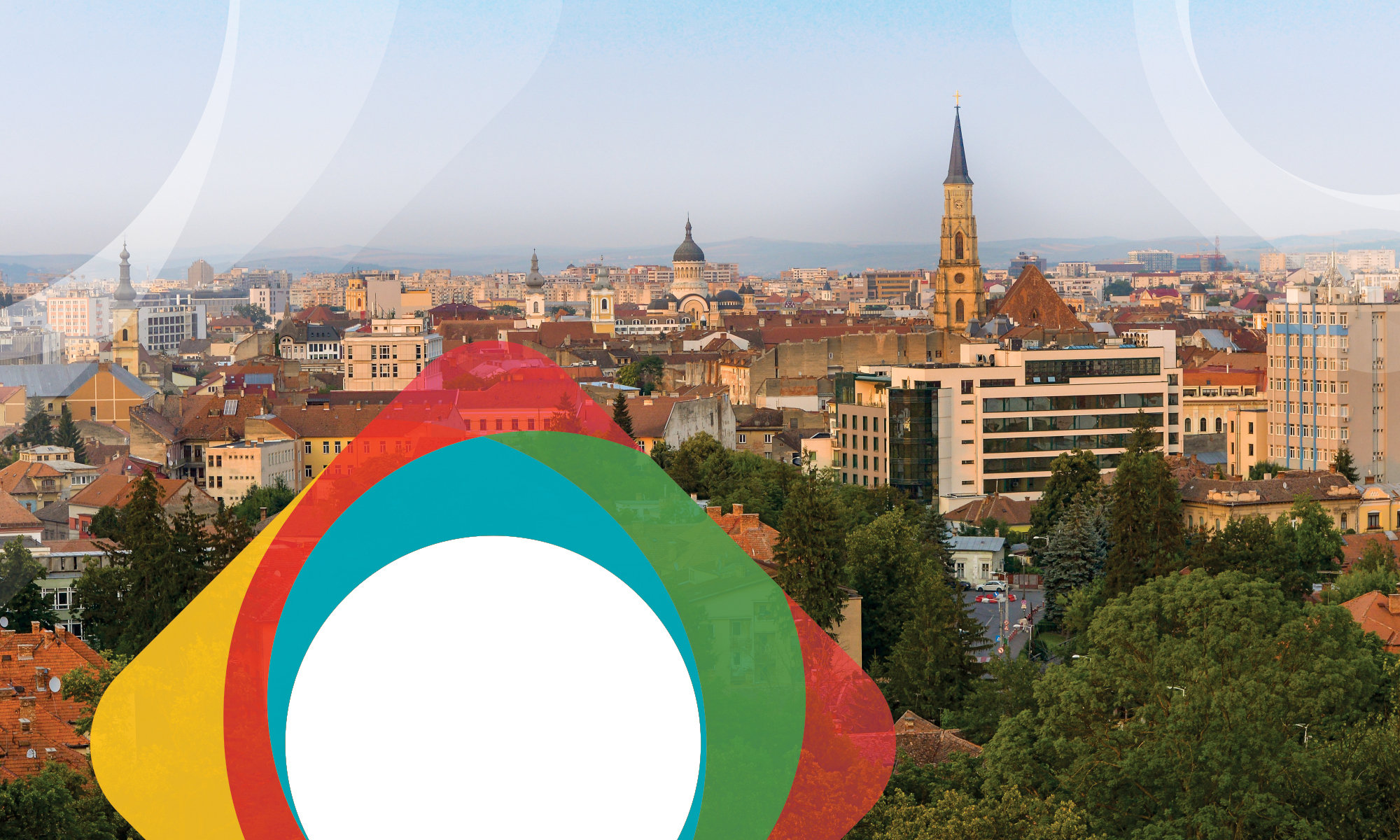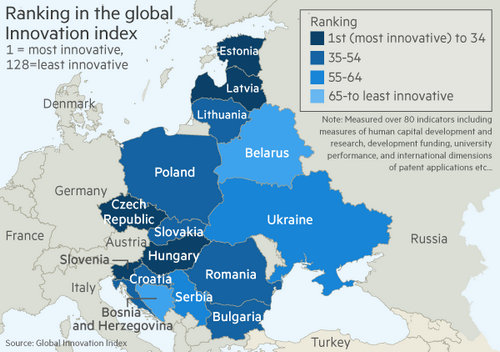Innovation – Country Analysis: In 2018 Romania is ranked 49th out of 126 economies in the GII 2018. The Global Innovation Index 2018: Energizing the World with Innovation is the result of a collaboration between Cornell University, INSEAD, and the World Intellectual Property Organization (WIPO) as co-publishers, and their Knowledge Partners. The author of the article – Diana Ciorba – SOFTECH Marketing Manager, had a look at this report in order to try and understand what is keeping Romania behind in spite of its human capital and knowledge output.
According to the latest Global Innovation Index there is an income based divide on the world map. Since the index includes 7 pillars for which each country is ranked – infrastructure, human capital and research, institutions, creative outputs, knowledge and technology outputs, business sophistication and market sophistication – it is rather difficult for middle-income economies like Romania to keep up with higher-income economies. “China, Malaysia, Bulgaria, Croatia, Thailand, Romania, and Montenegro are among the group’s 10 best-ranked upper-middle-income economies across all three main indices and in the Innovation Efficiency Ratio.” states the GII 2018 Report.
In spite of this, Croatia, Thailand, Romania, and Islamic Republic of Iran perform above the high-income group average in Knowledge and technology outputs.
Romania’s Particular Strengths from an Innovation Perspective
#1 Knowledge and Technology Output
As presented in the GII 2018 country profile, Romania is ranked 7th in the world for its knowledge impact and ranked 16th for its ICT services exports as percentage from the total country’s trade. Romania reaches almost the top 25 for its high-tech net exports boosted also by a solid foundation of high and medium-high-tech manufacturers (for which indicator the country is ranked 22nd in the world)
#2 Infrastructure
Not surprisingly, Romania’s new technology infrastructure prevails by its ecological sustainability. Romania is the 6th country in the world in terms of ecological sustainability and holds the pole position for the ISO 14001 environmental certificates/bn PPP$ GDP.
#3 Creative Output
Romania is a country positioned at the crossing of multiple cultures with strong influences from all sides. For this it always kept a high cultural and creative services production and diffusion, ranking 7th on the world map for its cultural and creative exports weight in the total trade. On top of that Romania is number 38 in the top of mobile app creation. Not bad for such a small country from the middle-income economies group.
#4 Human Capital
Based on a strong tertiary education, Romania keeps scoring well on the total number of graduates in science & engineering. It is on the 16th place on the world map. This translates into a huge growth potential in the STEM sector, provided that the country does not loose these well prepared brains to the advantage of western and US economies.
#5 Credit Market
In spite of a low market sophistication, Romania wins points on the ease of getting credit index. The former communist bloc country is ranked 18th on the world map for the speed and easiness of allowing credit to business parties and population.
As an intermediate conclusion, these five main strong points that Romania features on the GII (Global Innovation index) in 2018, appear promising and capable to propel the country towards the innovators top ranks in the upcoming decades. Software development and technology innovation centers such as Cluj-Napoca, the 2nd city of Romania have intrinsic particularities that attracted names such as the “Future Silicon Valley of Europe”. We have to look though at the weaknesses that hold back Romania in this process.
Romania’s Weaknesses from the Innovation Perspective
#1 Market Sophistication
Unfortunately, in terms of microfinance loans and investment Romania is down in the ranks. The market capitalization is low, it is rather difficult to protect minority investors and venture capitalists did not paid too much attention to this country. Hopefully these will change soon because the market is rather big as volume and trade potential, the competition is free and it definitely is growing.
#2 Business Sophistication
Even if Romania is on the 55th place on the world map for these indices, due to a wealthy knowledge workers and a positive knowledge absorption, in terms of innovation linkagesthe country has to recover the distance. According to the state of cluster development Romania is the 107th out of 126 countries. Signs of JV-strategic alliances deals are barely noticeable.
#3 Knowledge Creation
In spite of the intensive knowledge & technology outputs, Romania lack the interest or motivation to produce and register patents and utility models. For these indicators, the country falls into the third quarter of the total ranking. According to a logical process on this aspect major recovery can be done, if Romanian companies and innovators assume the process of submitting patents on their own and enforcing this overall procedure.
#4 Expenditure on Education and Research
A minimum of 2.90% of the GDP is oriented towards education in Romania. That is less than half of what is spent in Finland for the same chapter. While for the R&D sector only 0.50% of GDP is directed to this purpose. That is almost the lowest expenditure on R&D from the EU, in spite of the huge potential the human capital has in Romania. It equals 17.24% of what Finland or Germany are spending, or a 16.66% of what Switzerland is spending on R&D.
The findings of the Global Innovation Index 2018 are relevant for those who want to understand what they may find from a technology innovation perspective in Romania and to break-through the real life paradoxes of developing countries. A lot of intellectual potential, human capital and knowledge absorption, facing a less organized innovation system and infrastructure, lacking domestic funding and always concerned about the next day’s difficulties. Due to the new networks and communication capabilities, Romania succeeds to attract business and institutional partners to foster its creative potential and capitalize on solid STEM academic preparation. The Romanian start-up and entrepreneurial scene gets more dynamic and ready to deliver marketable innovations.
author: Diana Ciorba / For more information go on www.softech.ro


